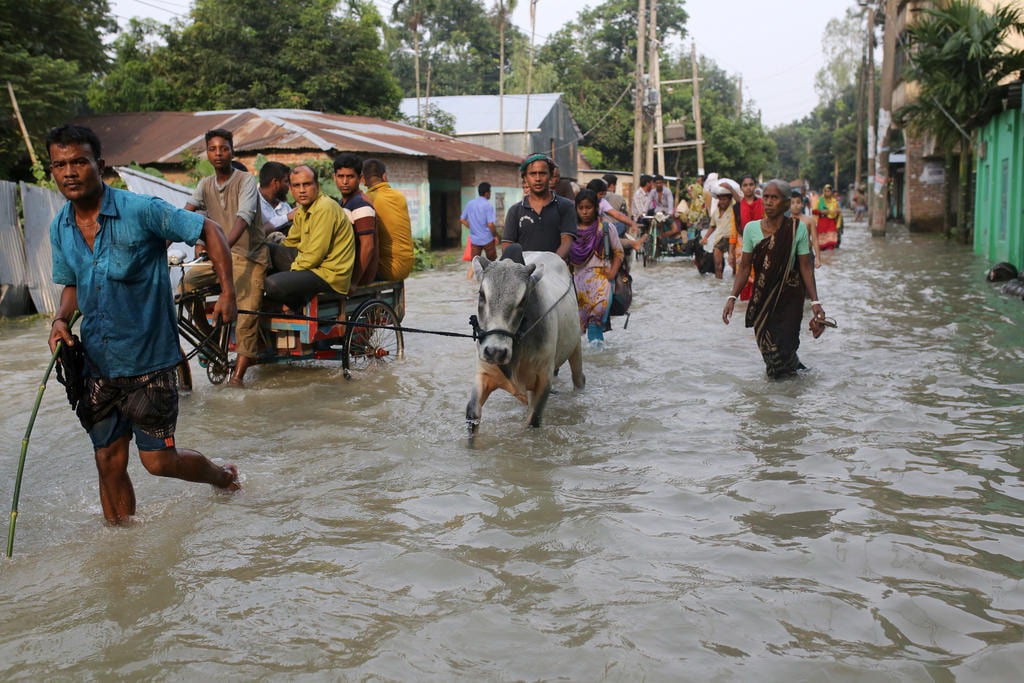
Over the world, climate change has become an even more pressing issue within the development space. Climate change hazards are becoming more frequent and devastating, affecting lives and critical infrastructure. Governments and international organizations are pacing to sign treaties and agreements as international cooperation will be one of the most important solutions to tackling climate change. However noble these actions are; confronting climate change at the global level could pose some serious challenges in terms of implementation due to its top-down approach. Despite offering financial support, data, and best practices, international treaties are not well-positioned as much as city governments are in ensuring that communities take action to reduce the causes of climate change and adapt to a changing climate.
The comparative advantage
Sub-national governments at the city, county, state, or district level have the advantage of close proximity to the people and communities. They are the first point of contact and have close access to current and accurate information. This enables them to monitor vulnerabilities and prepare better for disasters. Also, local governments play critical roles in developing local and regional plans that direct the path of action. It is this positioning that makes them more advantaged to address the causes and impacts of climate change through policy formulation.
Local governments possess information on developing critical infrastructure for climate resilience, as well as knowing which ones are more affected by disasters. Operational oversight of housing, community services, sewer and water networks, roads and transportation, and dams lies with local governments; hence the ability to map resilient future development and protect essential natural resources such as green open spaces and public parks. Because local authorities are given autonomy and financial freedom to develop budgets and determine spending, they can direct resources to climate change mitigation and adaptation efforts.
The close proximity of local authorities to communities makes local participation possible. The involvement of the public in adaptation processes and climate change mainstreaming is associated with improved efficiency because it provides content-specific interventions and leverages different types of knowledge. ILO emphasizes that climate change adaptation differs from disaster relief and needs to be part and parcel of local policies and day to day lives of residents.
What next?
Evidence from literature and research suggests that climate change mainstreaming into national and sub-national plans has been inadequate and, for some countries, absent. Despite being well positioned to tackle climate change most local governments have not incorporated it in their local plans. An analysis into South African IDPs indicates that climate action is at the very least of their priorities and not woven into social development issues as it should. This is due to a lack of human resources, finances, and capacity to undertake large-scale infrastructural climate resilience projects. More so, many national governments are very centralized making it tasking for low-tier governments to make any decisions. In extreme cases, some local authorities are required to request permission to carry out any development work. In order to confront this, a lot needs to be done.
- Develop watertight climate action plans
City governments should create Climate action plans. These will direct the development of the areas under their jurisdiction to the path of resilience. Plans should be holistic; covering renewable energy adoption, sustainable use of natural resources, energy-saving practices, and ways in which this will be implemented and enforced. This should be well knitted into the existing local development plans for effective results.
- Investing in critical infrastructure
- Central governments should support local action
Governments should support local authorities through increased fiscal transfers; this will go a long way in increasing capacity. More so, removing economic and policy barriers for mainstreaming adaptation should be done.
- Strengthened partnerships
Partnerships with both international and grassroots actors will go a long way in effecting collaborative action. Poorly resourced city councils should have access to donor funding for the implementation of projects. Grassroots organizations and actors will play a key role in implementing mechanisms on the ground, providing information and local knowledge. Moreover, partnerships with the scientific community, universities, and research institutions ensure credibility and up-to-date information on the latest scientific and technological innovations.
Cover Image Source: Today Online